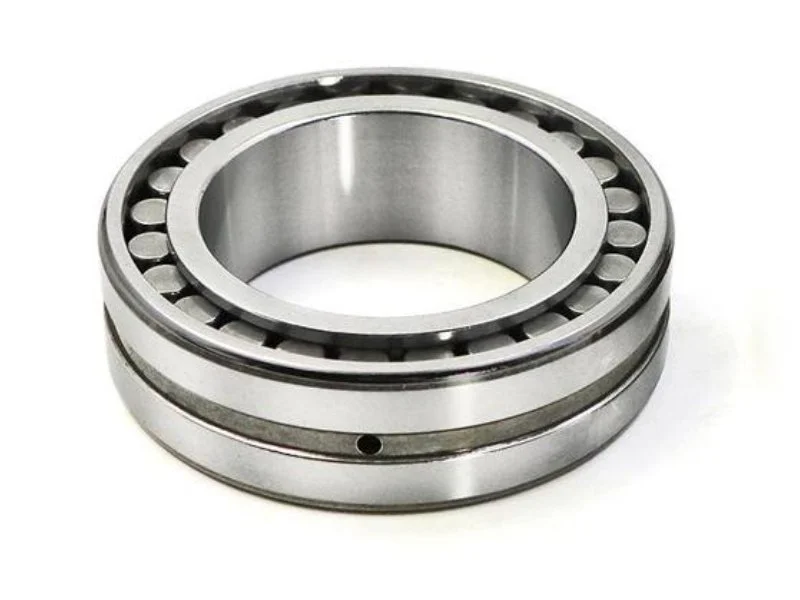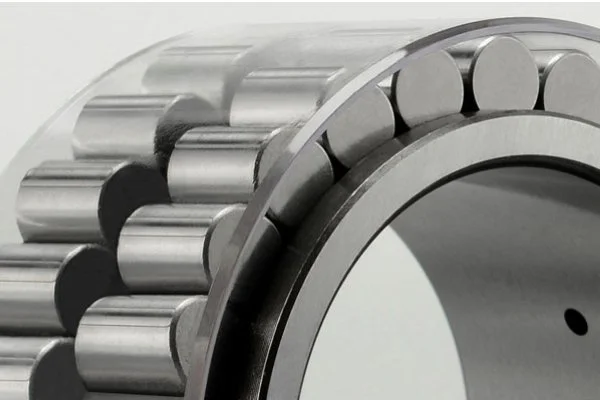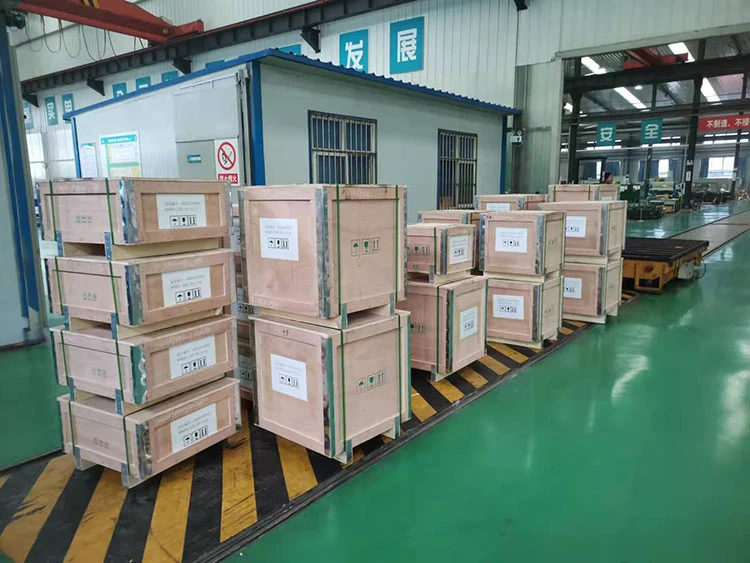Double Row Cylindrical Roller Bearing Installation and Maintenance
Double Row Cylindrical Roller Bearings are essential components in various industrial applications, offering superior load-bearing capacity and stability. These bearings feature two parallel rows of cylindrical rollers, allowing them to handle higher radial loads compared to single-row designs. Their unique structure makes them ideal for use in heavy machinery, particularly in metallurgical and mining industries. Proper installation and maintenance of these bearings are crucial for ensuring optimal performance and longevity. This blog post will delve into the intricacies of Double Row Cylindrical Roller Bearing installation and maintenance, covering key aspects such as preparation, alignment, lubrication, and regular inspections. By following best practices in installation and maintenance, operators can maximize the lifespan of these bearings, reduce downtime, and improve overall equipment efficiency.
What are the key advantages of Double Row Cylindrical Roller Bearings?
High Load Capacity
Machines and tools that are subject to high radial loads benefit greatly from the use of double row cylindrical roller bearings. When compared to designs with only one row of cylindrical rollers, those with two rows greatly enhance the bearing's ability to support loads. Double Row Cylindrical Roller Bearings are able to endure the tremendous forces that are present in rolling mills, mining machinery, and big industrial gearboxes because of their increased load capacity. Heavy machinery relies on these bearings to run smoothly, reduce the likelihood of failure, and increase the equipment's lifespan because of their stability and capacity to carry enormous loads.
Enhanced Rigidity
One of the standout features of Double Row Cylindrical Roller Bearings is their superior rigidity. By reducing deflection and keeping the shaft in exact alignment, the double-row design offers outstanding stability even when subjected to heavy loads. Applications where tight tolerances must be maintained, such precision manufacturing equipment or machine tool spindles, benefit greatly from this increased stiffness. Improved product quality and prolonged machine life can be achieved through the lower vibration levels caused by the greater stiffness of Double Row Cylindrical Roller Bearings. In addition, these bearings' stiff shape improves load distribution, which in turn prevents stress concentrations that may cause wear or failure to occur too soon.
Durability and Low Maintenance
Double Row Cylindrical Roller Bearings are renowned for their exceptional durability, even in harsh operating environments. The superior wear resistance and fatigue strength of high-quality materials like GCr15 or GCr15SiMn are usually used to build these bearings. Compared to other types of bearings, Double Row Cylindrical Roller Bearings are more durable and can handle shock loads and misalignment. Longer service life and less replacement frequency are the results of this durability, which in turn results in substantial savings in maintenance and downtime. Additionally, the separable design of many Double Row Cylindrical Roller Bearing types (such as the NNU and NN series) facilitates easier installation and removal, further simplifying maintenance procedures and reducing overall maintenance time and costs.

How are Double Row Cylindrical Roller Bearings installed correctly?
Preparation and Cleaning
Proper preparation is crucial for the successful installation of Double Row Cylindrical Roller Bearings. Begin by ensuring that the bearing and all mounting surfaces are thoroughly clean and free from any debris, dust, or contaminants. Even small particles can cause damage or misalignment during installation. Use appropriate cleaning solvents and lint-free cloths to clean the bearing, shaft, and housing. Inspect the bearing for any signs of damage or wear before installation. For Double Row Cylindrical Roller Bearings with a tapered bore (suffix K), pay special attention to the tapered surface, ensuring it's clean and smooth. Proper preparation helps prevent premature bearing failure and ensures optimal performance from the start.
Alignment and Mounting
Correct alignment is critical when installing Double Row Cylindrical Roller Bearings. Misalignment can lead to increased friction, accelerated wear, and premature failure. Use precision instruments to ensure that the bearing is perfectly aligned with the shaft and housing. For bearings with a cylindrical bore, a hydraulic or mechanical press may be used for mounting. When dealing with tapered bore bearings, special care must be taken to achieve the correct fit on the tapered seat. The use of feeler gauges or dial indicators can help ensure proper radial clearance. Remember that Double Row Cylindrical Roller Bearings allow for some axial displacement between the shaft and housing, which can be advantageous in certain applications. However, it's essential to follow the manufacturer's guidelines for axial play to avoid issues during operation.
Lubrication and Final Checks
Proper lubrication is essential for the longevity and performance of Double Row Cylindrical Roller Bearings. Apply the recommended lubricant type and quantity as specified by the manufacturer. For grease-lubricated bearings, ensure that the grease is evenly distributed throughout the bearing. In oil-lubricated systems, check that the oil level is correct and that the oil circulation system is functioning properly. After lubrication, perform final checks by manually rotating the bearing to ensure smooth operation without any binding or unusual friction. Listen for any unusual noises that could indicate improper installation or damage. For precision applications, consider using vibration analysis tools to verify that the installed bearing meets the required specifications. Proper lubrication and thorough final checks help ensure that the Double Row Cylindrical Roller Bearing is ready for optimal performance in its intended application.

What are the best practices for maintaining Double Row Cylindrical Roller Bearings?
Regular Inspections and Monitoring
Implementing a routine inspection and monitoring program is crucial for maintaining the health of Double Row Cylindrical Roller Bearings. It is possible to spot pollution, wear, or lubrication problems early with the use of visual inspections performed on a regular basis. Indicators of impending difficulties include changes in temperature, strange vibrations, or sounds heard while operating. Applying condition monitoring techniques like thermography, vibration analysis, or oil analysis to essential applications is a good idea. The bearing's condition and the likelihood of its failure may be better anticipated with the help of these cutting-edge monitoring methods. Be sure to look for surface damage, such as fretting or pitting, on the rollers and raceways of Double Row Cylindrical Roller Bearings as you inspect them. Finally, make sure there is no contamination by checking the bearing seals or shields.
Proper Lubrication Practices
Perhaps the most important part of maintaining a Double Row Cylindrical Roller Bearing is making sure it is properly lubricated. When planning a lubrication schedule, take into account the bearing's operating conditions, environmental considerations, and the manufacturer's recommendations. Adding fresh oil and removing old, dirty grease at regular intervals is essential for keeping grease-lubricated bearings clean. If your system is oil-lubricated, you should always check the oil level and change the oil as the manufacturer suggests. When deciding on lubricants for Double Row Cylindrical Roller Bearings, keep the load, speed, and operating temperature in mind. Use high-quality greases that meet or exceed the manufacturer's specifications to lubricate the bearings. It is important to exercise caution when applying lubricant so as not to overheat the components or harm the seals. Lubricant contamination can reduce bearing life, thus it's necessary to use contamination management procedures to keep the lubricant clean.
Handling and Storage Considerations
Maintaining the integrity and performance of Double Row Cylindrical Roller Bearings requires proper handling and storage. Always use dry, clean hands or clean gloves while working with these bearings to avoid contamination. To prevent internal damage that might not be immediately apparent, keep the bearings from falling or being hit. Return all Double Row Cylindrical Roller Bearings to their original packing for safekeeping until needed. Store bearings in a clean, dry environment with stable temperature and humidity levels to prevent corrosion and contamination. For long-term storage, consider using protective oils or wrapping bearings in corrosion-resistant materials. If bearings must be removed from equipment for any reason, clean them thoroughly and apply a suitable preservative before storage. Proper handling and storage practices help ensure that Double Row Cylindrical Roller Bearings remain in optimal condition until they are needed for installation or replacement.

Conclusion
Double Row Cylindrical Roller Bearings are critical components in many industrial applications, offering high load capacity, enhanced rigidity, and durability. Proper installation and maintenance are essential for maximizing their performance and lifespan. By following best practices in preparation, alignment, lubrication, and regular inspections, operators can ensure optimal bearing performance and reduce downtime. As technology advances, innovative solutions like the HSC250AP5 from CHG Bearing continue to push the boundaries of bearing capabilities. For expert advice on Double Row Cylindrical Roller Bearings and other high-performance bearing solutions, contact CHG Bearing at sale@chg-bearing.com.
FAQ
Q: What is the main advantage of Double Row Cylindrical Roller Bearings?
A: The main advantage is their high radial load capacity and enhanced rigidity, making them ideal for heavy-duty applications.
Q: How often should Double Row Cylindrical Roller Bearings be lubricated?
A: Lubrication frequency depends on operating conditions and manufacturer recommendations, but regular lubrication is crucial for optimal performance.
Q: Can Double Row Cylindrical Roller Bearings handle axial loads?
A: While primarily designed for radial loads, they can accommodate limited axial displacement, but are not ideal for high axial loads.
Q: What are common signs of Double Row Cylindrical Roller Bearing failure?
A: Common signs include unusual noise, increased vibration, excessive heat generation, and reduced rotational smoothness.
Q: Are Double Row Cylindrical Roller Bearings suitable for high-speed applications?
A: They can be used in high-speed applications, but proper lubrication and cooling are critical for success in these conditions.
References
1. Smith, J. D. (2013). "Roller Bearing Design and Application." Mechanical Engineering Handbook, 5th Edition.
2. Johnson, K. L. (2015). "Contact Mechanics in Rolling Bearings." Journal of Tribology, 137(2).
3. Williams, R. A. (2017). "Maintenance Strategies for Industrial Bearings." Plant Engineering, 71(3), 45-50.
4. Chen, W. W., & Wang, Q. J. (2018). "Thermomechanical Analysis of Elastohydrodynamic Lubrication in Rolling Element Bearings." Tribology Letters, 66(1), 1-15.
5. Harris, T. A., & Kotzalas, M. N. (2016). "Essential Concepts of Bearing Technology." CRC Press, 6th Edition.
6. Zhang, L., & Niu, J. (2019). "Recent Advances in Roller Bearing Technology for Industrial Applications." International Journal of Precision Engineering and Manufacturing, 20(1), 147-159.

